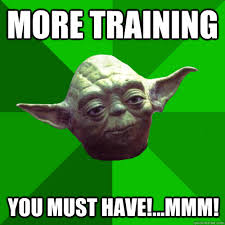|
Dealing with officer transition is a busy time of year for most organizations. If you’re part of the management team helping onboard new recruits, being super organized and having structured training sessions allow that process to run more smoothly. And if you’re an incoming officer, staff member, or new admin, or someone who’s just been given more responsibilities in managing the organization, learning the ropes might feel like drinking from a fire hose.
We’re a few steps ahead, though (and if you’re reading this, you are, too!) The following resources will help you navigate this period of transition like a pro. The objective is to build upon the great work you’ve already done rather than start over every time.
Support Documentation The Support Center is an online resource for general memberplanet administrators. If your organization has an enterprise account with memberplanet, first check your customized success site for how-to documentation and FAQs. Our support articles have detailed, step-by-step instructions, examples, screenshots, and sometimes video. Admin role management: How to give memberplanet admin access to officers in your organization. Manage bank access for administrators: Choose admins/staff members who are allowed to access your organization’s bank info. Set up a new bank account for your organization: Our secure bank verification process requires a government-issued ID for your group to receive funds in a new account. Review reports for copy events, forms, and more: Each feature has its respective reports section, and any type of transaction data can also be viewed in the All Payments Report. Forms, donation campaigns, and events can be copied and edited.
memberplanet Blog For actionable tips, training strategies, and leadership advice, visit our blog category: officer transition. Articles include resources for both incoming and outgoing staff or administrative users.
0 Comments
You’re trying to keep things running smoothly for your association (or your chapter), but are spending too much time keeping track of spreadsheets, finances, and events. Whether you’re new to your management role or going through a time of officer transition and feel like you’re running in circles, you’re not alone. If you’re ready to pull all your hair out, read this for some membership-management relief.
1. Start by organizing your members
If you aren’t already, consider using membership levels to organize your members. Membership isn’t necessarily a one-size-fits-all option, and that’s OK. Associations often collect more if they allow members to pay their membership dues and give a donation at the same time. The generous person/member company willing to pay a couple grand (and then some) can be part of a top-tier membership level (a high-value one with all the benefits and perks), while folks with a smaller budget may be able to access basic membership for $20. Some associations even offer free memberships as part of a strategy to entice users to upgrade to paid status later on. Give the option to automatically renew membership. It’s great to have different levels, but you still need members to renew – and they won’t always remember (or want) to manually take money out of their paycheck. No matter how much they love you and your cause, making it inconvenient for your members to part with their money is painful, so give them the convenient option of an automatic payment plan. For members who opt to pay manually, or those who are past due, send reminder emails to keep them informed. Communicate to members using the levels, types and auto renew statuses. Your messages should be customized to target specific recipients, whether those are your top-tiered members, lapsed members, or another list based on variable data.
2. Get mentally organized to save time and sanity
First, set realistic goals. Make them ambitious but practical; define targets that you think your team can actually achieve based on last year’s or last quarter’s data. How many members can you obtain, retain, or connect with in a realistic timeframe? Now that you’ve got some targets, recognize the fact that you’re not likely to hit them unless you use a calendar. Whether it’s a smartphone app or a physical appointment book, a calendar is great way to get organized and hit consistent milestones or deadlines. Set your priorities at the beginning of each day. List them in order of importance. Priorities help you finish what you start, which is always a good thing to do in business (and in life). Review each of your goals at the end of each day. See what you achieved, what you need to achieve, what you did well, and what you could do better tomorrow. Finally, clean up your workspace. Many leaders find it difficult to stay mentally organized if their physical workspace isn’t squared away. An office or designated work area should help improve productivity, not serve as a nesting place for small rodents. So, throw away that stack of unused lunch coupons, sift through the mound of papers, and set traps, if necessary.
3. Delegate the right tasks – and know which ones to do yourself
Delegation is simple – but if you’re not doing it right, you could be wasting even more valuable time. First, you need to identify the tasks you should delegate and the ones you shouldn't. Here’s some of the best stuff to pass off:
As a leader or manager, it’s important to let go of some of these jobs, even if you love or have gotten used to doing them. Whether your association has 20 members or 20,000, it pays to stay organized, as well as to make sure the memberships you offer are flexible and diverse enough to attract new members and retain existing ones. Managing membership can be tough, but it doesn’t have to be a hair-pulling experience. Visit memberplanet to explore an AMS that will help your association succeed.
Updated since original publication on 12/20/2017
Great trainers are naturally great leaders. And by definition, great leaders are those who inspire confidence, strength, and optimism. They are the folks who can motivate – not force – their administrators to reach their fullest potential as they ascend to a new role or take on greater responsibilities. And we all know how important a good trainer is during officer or staff transitions.
The term admin can be applied broadly – it can mean your committee heads, officers, or anyone you’ve put in charge of tasks that keep your organization running smoothly, whether it’s an association, chapter, or other type of membership-based group. As far as training the best admins goes, a great trainer/leader uses methods that can be boiled down to a few guiding principles. I call them 5 Keys to Training Your Staff Admins; master these, and your team will be set for success.
1. Demonstrate
For every specific skill or task to be instructed to your team admins, explain first what it is you’re about to share. More importantly, explain why it is important for your organization. How does it work in its specific scope? How does it affect the overall team? It’s important to give a sense of the overall flowchart of the group and the admin’s role within it. “A leader is one who knows the way, goes the way, and shows the way.”
2. Observe
You’ve provided the instructions to light the path. Now have your team show you how to do it. You’ll be able to see if how much they’ve retained from their training, and how well they apply their knowledge and adapt to different situations. Of course, knowing what you know, don’t keep them in the dark. Adjust the course when necessary. Encourage and empathize.
3. Tailor
We are all individuals (maybe some are more like rebels) in the world, and personality will eventually be revealed, especially in the course of training. Make time to discover your admins’ own skills and experience. Do they enjoy a steady pace? Or do they work best at light speed? But be sure to recognize their different ways of learning, and be open to adapt to give each of them the answers they’ll need ongoing.
4. Empower
Grow your staff admins. As they navigate their new role, give them space to make mistakes – that’s how we really learn. Assign a project or task as a test (e.g. an upcoming social event, or a fundraising campaign, or a yearly calendar of projects) and see how they rise to the challenge. Let them own it. If they can construct it, it’s like a rite of passage.
5. Support
Provide support and feedback. Work with each admin to set up short- and long-term goals for themselves and the organization and make sure they know how to use the tools available to them. On the feedback loop, too, show them what’s been done previously by their predecessors. Encourage them to find ways to innovate and improve efficiency while building on past successes and the great work that’s already been done.
Even after they’ve completed their training, seek out your staff admins’ feedback and listen to their perspectives. Learning is a two-way street, and hearing from them will bolster your own knowledge and help you further educate them. When your admins are confident that you as their trainer/leader have their back and their interests at heart, they’ll operate at peak productivity, and they will lead the rest of the organization in the way they’ve been instructed. This is the way to build a lasting team and community. “Without a sense of caring, there can be no sense of community.”
Updated since original publication on 02/12/18.
You’re put in charge. Now what? Group leader transitions are not without their complications, but that doesn’t mean they have to be difficult. By following a few key steps, you can ensure a smooth transition (think smoothie, not boba) that is beneficial for the entire organization. The transition period is the time for new admins to prepare for their position while outgoing officers gain a sense of closure as they move on from a job well done. The goal is to maintain a sense of seamlessness and continue the great work that’s already been completed. Remember, you’re not starting from scratch. When done right, you avoid setbacks (which might feel like a chunk of fruit stuck in your straw).We’ve put together three pro tips for pulling off the ol’ switcheroo with minimal disruption to your organization. 1. Maximize your training Access to information is critical for the continued success of the organization and the potential achievements of the incoming officer. They say teamwork makes the dream work, so make sure new and old leaders come together as a unit to make the transition easier and more effective. Maximize the opportunity to learn from the outgoing officer by asking the right questions during the training period. Author and business mentor Michael Hyatt identified 20 key questions to ask other leaders to bolster your own skill set. Here are some key topics to inquire about during the transition process:
Additionally, reviewing goals and objectives from previous terms allows transitioning admins or group leaders to update themselves on the progress of those goals, so they have a reference point for the upcoming term. The former officer should provide a status report on ongoing projects as well as current budget and financial records. To help you build upon the work that’s already done, check out the reports section on the platform, which provides a history of your group’s transactions. You can also see tracking for emails, event sites, and donation campaigns. 2. Make a great first impression We all know that first impressions matter, so this transition period is the time to showcase yourself to the group. Membership management software is a helpful tool because it lets you access current membership information and reach out to the entire organization simply and efficiently. Use it to send a group email to introduce yourself and let members know about the transition process, upcoming meetings, and any changes the new administration will be making to its agenda. You can target your email to specific member levels for a more personalized message, as well as use the Smart Lists feature to segment your distribution lists by variable data. 3. Be prepared to prioritize An incoming leader can get overwhelmed with information overload, so being organized is essential. Updating lists and prioritizing tasks can make the early days of transition less stressful. Your organization probably already has a list of essential documents you’ll need to get started, but here are some of the basics you don’t want to overlook during the process.
Online document storage is available on the platform to upload documents that can be shared with all your admins. If you’re a new admin user, simply check document storage in your admin portal to see what’s already been uploaded.
Once you have obtained and sorted through these documents, you'll be able to focus your efforts on the most pressing issues as a new leader for your organization. Uncle Ben (of Spider-Man fame, not the rice) said, “With great power comes great responsibility.” You don’t need to be a superhero to learn the value of this lesson. “With great power comes great responsibility.” As a group leader, you set the tone for the entire organization. It’s important that you stay up to the task by being prepared and making the most of the officer transition process. Maximize the resources that are available to you and build upon the wisdom of past leaders and current colleagues. Orchestrating a successful transition is your first task as a leader, so make it count! By keeping important documents, reports, contacts, and everything else in one spot, memberplanet simplifies leadership and officer transition. Log in to check it out. Updated since original publication on 12/11/17.
Whether you’re the leader of a fraternal group, a religious group, a nonprofit, or any other type of organization, there’s a good chance that the beginning of the quarter or the change of seasons will mean a time of transition in admins to a new guard. Or, it could just mean that the calendar will be a lot busier, and extra hands will be needed to execute your group’s plans. It’s always a good idea to be prepared for the departure of your current group of seasoned officers, or the necessary addition of other capable personnel to the mix – but really, all you need to do is remember a few important things. 1. Plan ahead, and then plan earlier As any good recruiter will tell, the first step to give your group the most optimal chance of continued success is to give everyone the widest possible space and time to not be caught by surprise. Observe who’s currently doing what for your group at each level of the organization, and then project into the future who’ll be serving in those functions in both the short and long term. While there’s a good chance that folks will already be chomping at the bit to volunteer for new positions of responsibility, you should always be ready to actively look for someone to fill the spot(s). Recruitment-wise, build in enough time to find and prepare your successors before they’re on the job. Whatever time you think will be necessary to cover the basics and beyond, add in a bit more of a time buffer to the duration just in case. 2. Know the idea, and the ideal Use your own experience to guide the creation of your own actual list of requirements – yes, a written down list – of what’s needed for the position. What’s worked for your group in the past? What hasn’t worked? What do you wish you would have known before starting your role? As the person who’s been performing these functions over time, you’re really the best suited to know the “idea” of the role. Keep in mind, too, your sense of the “ideal” candidate. While no one may completely fit that bill (truth be told, probably no one does, or should be expected to… but they can come in varying degrees of close), you should seek someone who possesses the key traits. Are they good verbal and written communicators? Are they timely in performing tasks? Are they problem solvers and innovators? Do they understand the group’s immediate and future goals? 3. Choose players who’ve played, and played well The best lead players for your group’s game likely already exist in the group. They understand the dynamics from the inside out, and they’ve also seen how your leadership has played out and helped further the group to reach its goals. Using your organization’s own members and many of the functionalities on the memberplanet platform, you’ve also got some key advantages. You can gauge who’s interested in assuming a leadership position via volunteer sign-up. You can launch an email campaign to announce positions that will be vacant. You can also survey your members about their interest in upcoming leadership positions. And just as importantly, you can analyze your members’ involvement through the organization’s activities, such as who RSVP’d to an event. Chances are high that the best next officers for the organization are members who have been involved in a lot of the group’s efforts, and that will be reflected in a concrete way in their participation. Log in to check it out. Updated since original publication on 2/5/2018.
Does it feel like your organization loses momentum with every new leadership transition? Here are four ways memberplanet helps you manage officer transition: 1. New leaders won't have to recreate the wheel Your organization's account is continuous, even as its leadership changes hands. This means that all previously created content is available to be copied, customized, and reused. Leadership will have an easier time making use of your organization's templates as your group builds up a cache of fantastic, branded content. Additionally, all form responses, payments, and member notes will remain in your organization's reporting, making historical information accessible to new leaders and admin users when they need it. 2. Accomplish administrative tasks all on one platform The learning curve for new leaders is steep, especially if you’re utilizing different software platforms for every task. However, if you’re using memberplanet, new administrative users will have much fewer programs and apps to learn. We purposefully designed our various modules to have similar workflow. Once you’ve learned how to build a form or event, building a donation site or anything else on memberplanet will be a breeze. And, of course, admins will benefit from automated membership features; they can spend more time providing value to the organization instead of on mundane tasks. 3. Share the load by delegating The platform allows you to add an unlimited number of administrative users to your group account - free of charge. Other membership management software will charge you per admin user, and sometimes per member. memberplanet allows you to share administrative access with one or more incoming leaders without relinquishing your own admin capability or sharing login credentials. So go ahead, share the workload with others. The platform was built with your organization's growth in mind. 4. Keep sensitive data private with admin role management
Adding unlimited admins is convenient, but we also have tools in place to ensure your organization's data and funds stay secure, even among admins. Full-Access Admins have the capability to restrict other leaders’ view and/or edit access to different modules. For example, you can create an admin role for a user to manage your online events without giving accessibility to view or edit your organization's bank account info (and we absolutely recommend you take advantage of this feature). Leadership transition is one of the many organizational challenges leaders face. Fortunately for you, our team is committed to simplifying all things membership management, including officer transitions. Simplifying membership is our constant focus! You can check out more tips on officer transition here on the blog. |




















